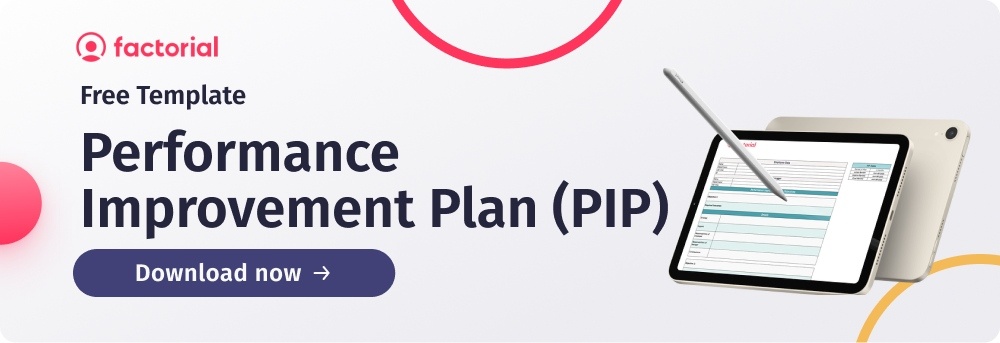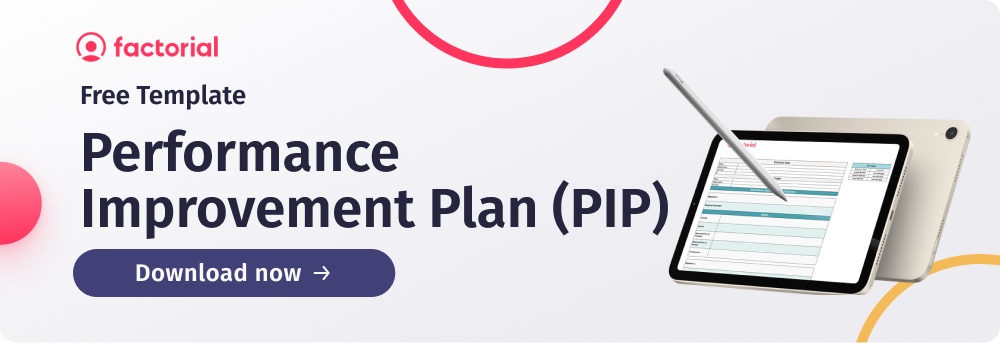Performance management can be tricky. It’s easy for businesses to make mistakes with their performance management strategies, leading to demotivated team members that don’t know how their career is progressing.
One way to help your people understand how to achieve their goals is to implement a competency-based performance management approach. This type of performance management strategy focuses on the specific skills, knowledge and behaviours required to perform a job effectively – and helps you to show your team members how to develop these skills.
In this guide, we’ll explain what a competency-based approach to performance management is and show you how to implement this strategy in your business to get the most out of your team.
What is a Competency-Based Approach to Employee Performance?
A competency-based performance management approach is a method of evaluating and improving performance in companies that focuses on the specific skills required to perform a job well.
Usually, team members are evaluated against a set of pre-defined competencies or job-related skills that are deemed essential for good performance and success in their roles. That could be technical, interpersonal, leadership or problem-solving skills. The key to a competency-based approach is ensuring that you communicate these competencies to your team.
This approach also involves setting goals that align with the organisation’s overall strategy and providing training and development opportunities to help teams acquire the right skills and knowledge.
By focusing on specific competencies rather than vague or subjective performance measures, this performance management technique helps to ensure that you evaluate employees fairly and consistently and that they have a clear understanding of what you expect of them in their roles. It also helps managers to identify areas where employees may need extra support or development and to provide targeted coaching and feedback to help them improve their performance.
What’s the Difference Between ‘Competences’ and ‘Competencies’?
The terms ‘competences’ and ‘competencies’ are often used interchangeably, but they do have different meanings.
‘Competence‘ and ‘competences‘ refer to the overall ability of an individual to perform a specific job or task. Competences are usually evaluated based on past performance, qualifications and other factors that show an individual’s ability to perform effectively at work.
On the other hand, ‘competency‘ and ‘competencies‘ refer to a specific set of skills or behaviours that a person needs to have to perform a particular job successfully. Usually defined by an organisation based on the specific needs of a role, competencies may include skills based on both technical and interpersonal skills.
Both concepts are important in the workplace, as they help businesses to identify and develop the talent they have to achieve their organisational goals now, as well as help them to make decisions about future hires.
Why Use a Competency-Based Approach?
Using a competency-based performance management strategy allows managers and HR professionals to understand how skills are distributed throughout the organisation so they can make hiring and promotion skills with confidence.
In addition, a competency-based approach helps managers to identify areas where team members might need extra support or development to help them achieve their goals. Then, they can provide targeted coaching and feedback to help them improve their performance.

With an effective competency-based performance management system, businesses can attract and retain top talent as team members know that managers will identify areas for improvement, up-skilling and career development.
So how do you put a competency-based performance management system in place?
How to Implement a Competency-Based Approach to Performance Management
-
Set core competencies
These competencies usually apply to all roles. They support your organisation’s values and mission. These competencies should also be competitive advantages that distinguish you from other companies. For example, a core competency might be excellent customer service – your business focuses on providing better service than competitors which helps you stand out.
-
Define job-specific competencies
Great people want to know what they need to do to succeed and further their career in your organisation. It’s important to define their role’s competencies so they have the tools to progress. Without them, you could end up with a problem with employee engagement and retention.
Your job-specific competencies should tie in with organisational and individual goals. You should define technical competencies for each role, but you’ll also need to consider leadership competencies for some jobs – for example, a content writer will need excellent writing skills and an in-depth understanding of the English language, while a content manager will also need to have skills in conflict management.
Some leadership competencies will be essential to the effective management of all businesses, but you should also consider the leadership attributes that are distinctive to your business to create a competitive advantage.
-
Create job descriptions
Once you’ve defined your competencies, you can develop them into job descriptions for each role within the business. This will help current team members to understand what they need to do to succeed and help motivate them to do better in their roles.
While you’re creating these job descriptions, make sure you plan for future job roles – what roles might you want to recruit for in the future? Liaise with your department managers to plan for these positions and put a timeline on when you might be ready to start hiring for them.
-
Identify skills gaps
Now that you’ve developed your competencies and job descriptions, you may notice skills gaps within your teams. This isn’t a problem – it’s completely normal in most organisations to find skills gaps as teams grow and people come and go. In fact, according to a World Skills UK study, 69% of business leaders believe they have a skills gap among their staff.
To help you identify skills gaps, you can use performance appraisals, coaching sessions or one-to-one check-ins to help determine what your team members need to know to perform well in their roles. You’ll then have a better idea of whether your team needs any additional support in getting there.
Performance appraisals are a great way to spot holes in your teams – you might realise that there’s a job type you’ve never hired for that would be the perfect addition to your team.

-
Set goals and communicate them effectively
Goal setting is vital to your team’s success. Use the competencies and job descriptions to set goals for your team members, but make sure to set objectives for them at department- and company level too.
Your goals should be SMART: Specific, Measurable, Achievable, Relevant and Time-Bound. SMART goals help individuals to understand what they need to do, when they need to do it and how it will be measured. It gives team members a clear path to success that they can follow to get measurable outcomes and help increase their performance.
Make sure you communicate why it’s important to have these goals and competencies in place – how will they help achieve the company objectives? Set clear expectations so your teams know if there are deadlines to complete training or to provide feedback.
Giving your teams steps on how to achieve their goals will help them meet them more quickly – and therefore boost productivity, improve performance and help you reach company goals faster.
-
Build a training and development programme
To help meet business objectives and help with your team’s personal development plans, you should build a training and development programme. Work with your department leaders to develop personal development plans, then use them to come up with a calendar of training opportunities for your teams.
It’s important to keep reviewing team performance and keep an eye out for skills gaps all the time. According to a McKinsey study, 94% of the workforce doesn’t have the skills they will be required to have by 2030 to perform their jobs well – so keeping on top of employee skills development will be vital to your organisation’s success.
Examples of training and development activities to add to your programme include:
- Company-wide training days to help increase employee engagement
- One-to-one management-team member check-ins
- Continued professional development (CPD) qualifications specific to certain job roles
By developing these training plans, you’ll help to bridge skills gaps in your teams. It’ll also be easier to identify high-performers for potential new roles, whether in management or new technical roles.
-
Monitor, document and assess

You must continue to monitor employee performance if you want an effective performance management system. You should:
- Monitor your learning and development activities so you can see where you need to make changes, and monitor your team’s progress using performance appraisals.
- Keep detailed documentation so you can use it to make improvements using data going forward
- Assess how the training and development programmes are doing – what’s working? What do you need to change?
You should also assess an individual employee’s performance regularly too – an annual review should be the minimum. During this assessment, you can provide constructive feedback on your team member’s work. You can also check whether they have met their performance goals and identify whether they have their own development needs that fit with business priorities.
-
Continually review and revise your performance management strategy
As much as we’d like to say you can, unfortunately you can’t set and forget your performance management strategy. You can use performance management tools to help keep on top of your plan, but you’ll still need to set aside time to review it to ensure it still aligns with your company objectives.
Make sure you collect frequent feedback from managers and team members to help you see where to make changes. This collaborative process helps create a great company culture where everyone feels involved and as if they’re moving in the same direction.
Continue to motivate your team by setting clear expectations on how meeting their goals can lead to career growth and progression within your company. And when they perform well, recognise and reward them. A few doughnuts in the office or a team activity goes a long way to show teams that you appreciate the hard work they put in to help the company succeed – in fact, a study by Deloitte showed that organisations that recognise their people had 14% higher engagement, productivity and performance in their teams.
What is a Performance Management Cycle?
A performance management cycle is a process that helps managers set goals and expectations for employees, help employees meet those goals, and give feedback about how well the employee did. It is a process that helps you continually monitor and improve the performance of your team by reviewing results regularly and determining when is necessary to address workplace issues.
Performance management cycles are essential for your organisation because they:
- Help you identify problems before they become major issues.
- Give you a chance to develop ideas for improvements.
- Provide feedback on where your employees are succeeding and where they need help.
- Help you identify those who are ready for promotion or other opportunities within the organisation.
- Provide an environment where employees can chase professional development to grow their careers.
Stages of the Performance Management Cycle
A performance management cycle is a repeating process that involves the following activities:
1. Performance Planning
This is the first stage of the performance management cycle, where you identify your objectives and set goals. The planning phase must include the individual goals for each employee, but also the overall company goals.
To plan effectively, it’s key to define who is involved in the strategy (employees, teams, and departments), and identify the responsibilities for each. And after the managers have decided on these foundational goals, it’s time to discuss the strategy with the teams and employees involved.
At this stage, you will also determine how to measure progress, and establish action plans for collecting and receiving feedback.
To plan effectively, you need to:
- Set SMART goals: Define specific, measurable, achievable, relevant, and time-bound goals.
- Make a list of tasks: Craft a detailed list of the tasks you expect your employee to do and define in which periods (weekly, monthly, or annually).
- Prioritise your list: Assign urgency to the tasks you defined and decide what needs your attention first.
- Set deadlines: Set up a calendar with deadlines for each task.
2. Performance Monitoring
Once you plan your strategy and everyone is working on their assigned tasks, it’s time to monitor progress. At this phase, you can check how well you’re doing about your objectives and adjust as needed. When monitoring your outcomes, you must regularly record progress against goals. It’s your job as a manager to stay updated with the overall progress and identify issues that demand attention and adjustments.
To monitor progress effectively, you must set deadlines for reviewing the work done. These review meetings can occur on a monthly, quarterly, or annual basis. However, some companies chose to share weekly sessions to keep everyone on the same page and increase motivation. Remember that performance reviews are really important to keep your team motivated. In fact, 92% of employees want feedback more often than just once a year. So, chances are you’ll need to review performance several times per year instead of just once.
This phase is essential in the overall performance cycle because it is your chance to address the issues that might come up during strategy implementation. By reviewing the goals you set in the first phase and comparing them with your actual results, you can identify a growth crisis and help your team overcome any obstacle.
On the other hand, if you are underperforming, you may want to consider areas where you need to implement employee training programs. As a manager, you’ll need to write reports and reviews regarding each employee’s performance, including:
- Whether goals were achieved or not
- Reasons why goals were not achieved (do your employee need additional training?)
- Skills used to perform each task.
3. Performance Review & Feedback
The third phase is about giving feedback to your team members, but also about receiving feedback to improve your work. At this stage, you must coach your employees and review their overall performance, give both positive and negative feedback, and listen to the obstacles they encounter on their way.
Collecting feedback from your employees is a powerful way to discover internal issues which might affect your team’s productivity and morale in the future. Managers are responsible for the performance of their employees, and they should be able to determine whether or not they are doing a good job. The performance management cycle can be used to help with this task. When dealing with it, it’s important to record progress individually. You should review results with each employee and discuss ways to improve performance.
With Factorial, you can easily create HR reports for performance management for your team with data from customisable surveys and performance reviews. The software will allow you to leverage data to set employee goals and support development 👉 Try Factorial for free.
If you have done right on the monitoring stage, chances are reviews will come out organically. You should have an overall idea of if goals were met. At this stage, you can ask yourself and your organisation:
- Which can be improved?
- Are goals aligned with the company’s mission?
- Did the workforce gain new skills during implementation?
- Does the team need more training or external help?
4. Development Planning & Rewarding
Once you’ve evaluated them based on their performance over the previous year or so, it’s time to create a development plan so that they can continue developing into more effective team members who deliver results that meet or exceed expectations!
The final stage of the performance management cycle is about planning what comes next and keeping employees motivated. At this point, you can create plans for developing your employee skills and competencies based on what you learned from the feedback process. You’ll also be in charge of rewarding and recognising your team for their hard work.
Managers often underrate this, but employee recognition programs actually impact productivity in the workspace. Indeed, research has shown that 83% of employees enhanced their work experience when participating in recognition programs, and they play an important role in decreasing turnover rates.
Performance Management Mistakes to Avoid
1) Unclear Goals and Expectations
Clear goals and expectations are the foundation of effective performance management. But mishandling the goal-setting process can leave team members demotivated, frustrated, disengaged, and unclear on what they should achieve. It can also lead to misunderstandings and conflicts between managers and employees.
So, what can be done to avoid this from happening? First, HR managers must ensure that goals and expectations are SMART: Specific, Measurable, Achievable, Relevant, and Time-bound. This helps team members understand exactly what they need to do, by when, and to what standard.
Another way to avoid this mistake when managing employee performance is to involve team members in goal setting. When your team is involved in their own goal setting, they are more likely to be invested in achieving them. They will also better understand what is expected of them, which can help prevent any confusion in the workplace.
2) Inconsistent Feedback and Communication
According to an international employee survey, 72% of respondents rated “managers providing constructive feedback” as important for their career development.
Often, transparent communication is lacking meaning employees don’t know where they stand, what they’re doing well, or what they need to improve. As a result, they may feel unmotivated and uncertain about their future with the company.
Effectively managing your team can be achieved by including these principles in your performance management strategy:
Encourage Communication Across Your Team
Establish a culture of open communication and encourage managers to provide regular feedback to team members, both positive and constructive. It also means giving team members a platform to provide feedback to their managers so that everyone is on the same page.
Offer Relevant Training Across Senior Management
Organisations can consider training managers and providing them with resources on effective communication and feedback techniques. This could be through workshops, coaching, and even performance management tools to facilitate communication.
Consistently Monitoring Progress
Once everything is set in motion, you can monitor progress and hold managers accountable for providing consistent feedback. Organisations can do this through employee performance appraisals, performance management software, and other communication effectiveness metrics or tools.
3) Ignoring Employee Development
Many organisations see the performance management process as a way to monitor and discuss the performance of team members rather than an opportunity to help them develop and grow. But in doing so, they are missing a critical component of continuous performance management that benefits not only employees but also the organisation.
According to LinkedIn’s Learning Report, 94% of employees report they would stay at a company longer if it invested in their career development. Professional development and training opportunities help employees feel valued, engaged, and motivated to go above and beyond throughout their career progression. Ignoring employee development can lead to employees feeling undervalued and unmotivated, resulting in high turnover rates, low productivity, and decreased morale, all of which can harm the business results.
Team members given opportunities to learn and grow are more likely to feel satisfied with their jobs, less likely to seek employment elsewhere, and more likely to contribute to the organisation’s success.
Here are a few tips to make for an effective performance management strategy:
- Make personal development a part of your organisation’s culture, fostering a culture of learning.
- Invest in training and development programmes tailored to employees’ unique needs and interests, whether it’s courses to eliminate implicit bias or training employees for coaching skills.
- Set your performance standards as you measure and track the impact of training and development opportunities on employee engagement, retention, and performance.
4) Using a One-Size-Fits-All Approach
While having some structure is important, it’s crucial to understand that every team member is unique. They have different skill sets, personalities, and motivators. So why treat them all the same?
Doing so might make team members feel their contributions aren’t valued, or their managers don’t understand them. As a result, they might disengage, become unproductive, or even leave the company altogether.
Tailor your performance management strategies to each individual. Doing so will boost employee performance as it shows you value and appreciate their unique strengths and contributions.
This doesn’t mean throwing structure out the window but rather taking a more personalised approach. Try to:
- Ask employees about their own goals and aspirations, and embark on performance planning that align with them.
- Adjust your feedback style to match each team member’s communication preferences.
- Provide different types of recognition and rewarding good performance based on what each employee finds meaningful.



